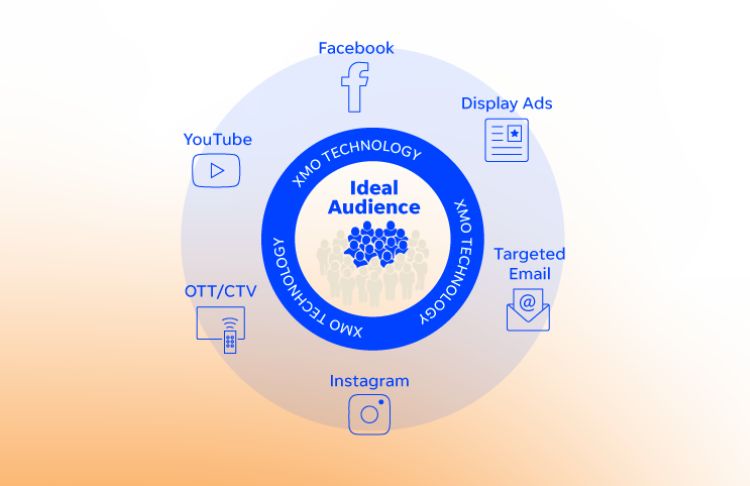As a customer, you expect to have the same experience with a business no matter where you’re engaging with them. You don’t want to email them a long, detailed question only to re-explain your situation when you’re on the phone with them. You expect that they know what you need—you took the time to let them know already!
The same goes for your customers. They want a consistent experience on any channel they interact with your business.

This is extremely difficult in today’s world where your business is expected to be on so many different channels—and it’s made more difficult if you don’t have the large team, technology, or budget to help you make the customer experience with your marketing seamless.
This is where cross-channel marketing comes in to help you solve this problem. Here we’ll answer all your cross-channel marketing questions like:
- What is cross-channel marketing?
- What are the benefits of cross-channel marketing?
- What is an example of cross-channel marketing?
- How can you create a cross-channel marketing strategy?
Here we go!
What is cross-channel marketing?
Cross-channel marketing is a strategy that focuses on providing a consistent experience for customers no matter where they’re interacting with your business across marketing channels. (Get it, across channels? Cross-channel!)
Cross-channel marketing goes beyond the marketing strategies that you’re running and focuses on how your marketing across channels impacts and improves the customer experience and moves them through the customer journey.
You may have also heard of multi-channel marketing. Multi-channel marketing refers to marketing across channels. The difference between multi-channel marketing and cross-channel is that multi-channel marketing isn’t specifically geared toward unifying the customer experience across channels—it’s focused on marketing your business on the channels that will reach the most customers.
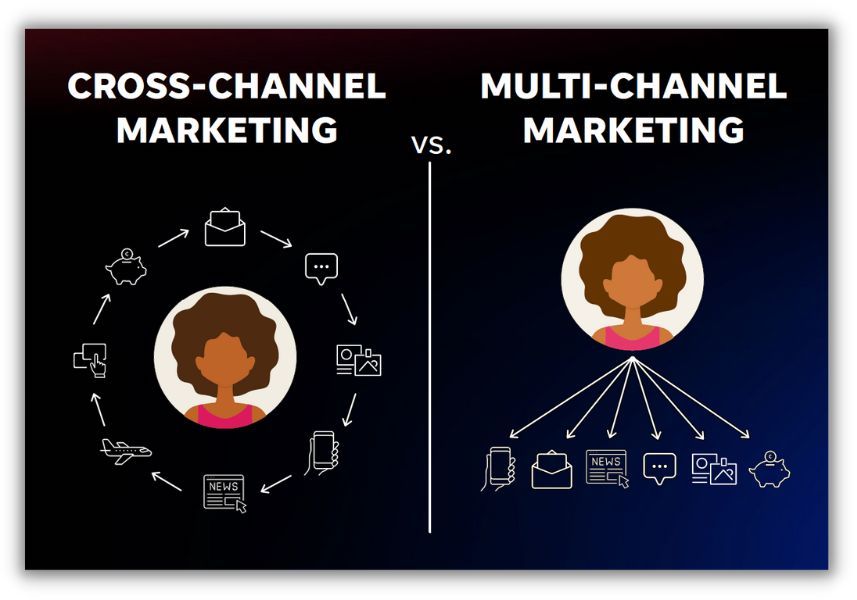
As you can see in the above chart, the marketing channels in a cross-channel marketing strategy are working together with the customer at the center. With multi-channel marketing, a customer can encounter your marketing across multiple channels, but they aren’t necessarily related or working together.
You could say that cross-channel marketing is a type of multi-channel marketing. Just more focused.
Cross-channel marketing example
To better understand, let’s look at a cross-channel marketing example from a larger brand: Spotify. Since 2017, Spotify has released its year-end Wrapped campaign, which analyzes user behavior and distills it into a fun and cheeky advertising campaign, also accompanied by a personalized wrap-up for each user with a look into their listening behavior over the year.
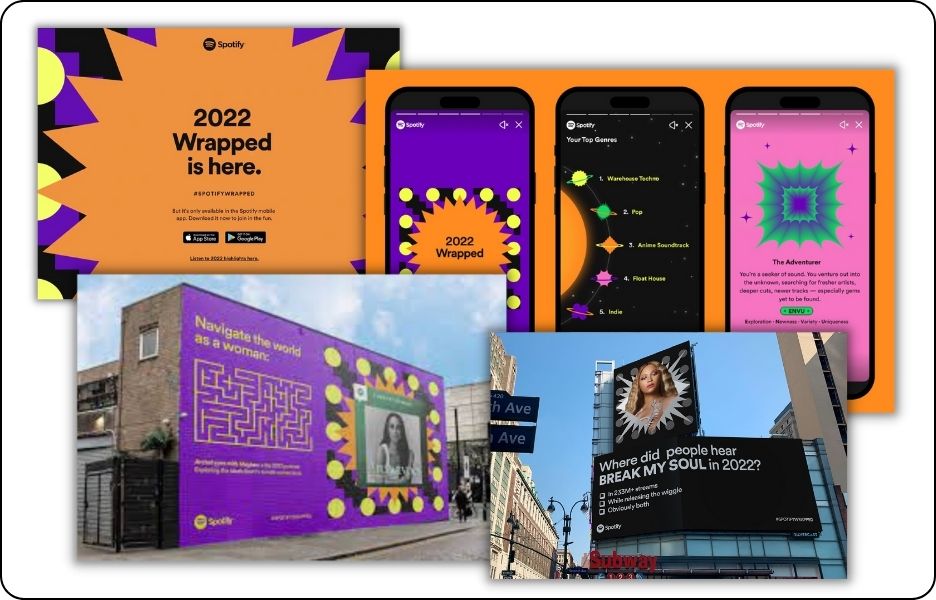
This is a great cross-channel marketing example for a couple of reasons:
- It’s multi-channel: The Spotify Wrapped campaign uses multiple marketing channels, including billboards, display advertising, social media advertising, and more to promote its message. It also provides the tools for users to share their results on their own social media channels, bringing in a user-generated content element.
- It’s cohesive: You can tell that the Wrapped campaign marketing materials align with each other. They have cohesive design elements, colors, fonts, and tone, which present a consistent experience for users across any channel.
- It’s personalized: Not every piece of this cross-channel campaign is personalized to the user, but the level of detail Spotify incorporates into its marketing messages makes it feel very personalized. Then Spotify takes it a step further by creating personalized wrap-ups and playlists for each listener using the data it has available. This year, they even added a new feature that notes your “listening personality.”
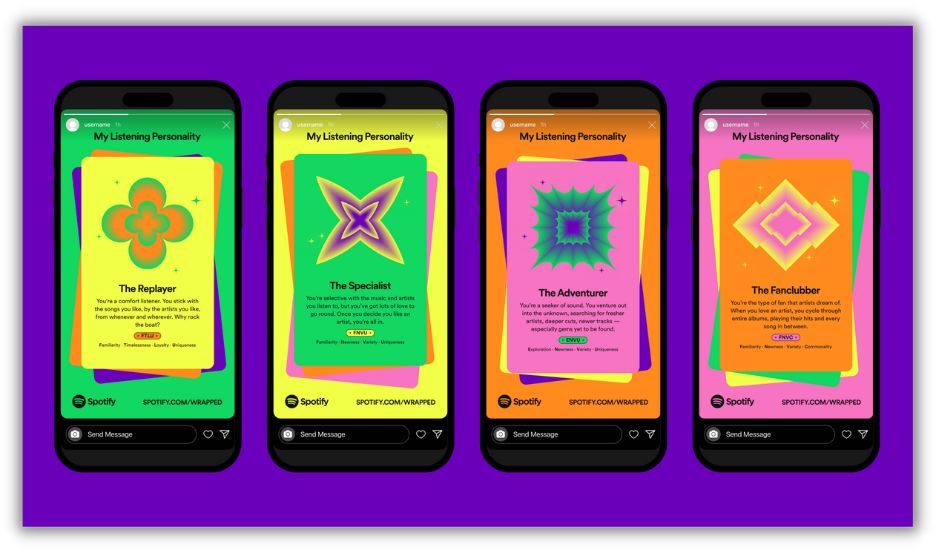
Overall, this example shows what’s great about cross-channel marketing: it presents a unified experience across all channels that engages customers and makes them feel catered to.
Benefits of cross-channel marketing
We’ve got the basic cross-channel definition out of the way. Now let’s talk about the purpose of cross-channel marketing and why you should consider this strategy.
More customer engagement
When you streamline a customer’s experience with your business across channels, one added benefit is that it can increase that customer’s engagement with your business. One of the cornerstones of cross-channel marketing is personalization, which is an increasingly important feature of successful marketing.
Personalized marketing is proven to drive customer engagement with a business. In fact, 72% of people say they only engage with personalized marketing messages.
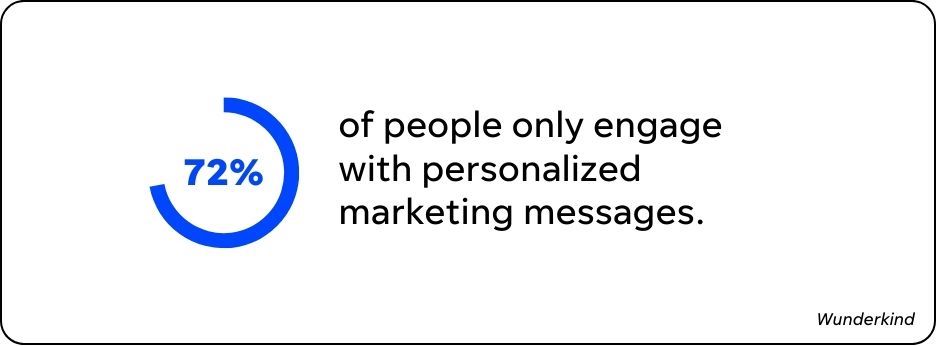
Better understanding of the customer journey
With cross-channel marketing, you can follow your customers throughout their journey and enable your marketing to keep up with them every step of the way—delivering personalized marketing messages based on how they’ve previously interacted with your business.
This not only allows you to deliver those personalized marketing experiences we mentioned, but it also lets you better understand how your customers are engaging with your business—and where. This gives you deeper insight into the buyer’s journey, which can help you refine and optimize your marketing strategy around what channels are driving the best results for your business and where in the customer journey you may need to tweak your marketing.
Increased brand awareness
Do you know how many ads you see a day? It’s estimated that the average person sees upwards of 4,000 ads per day. Many people develop a sort of “banner blindness” where they subconsciously filter out ads they’re seeing, especially online.

You can get around this with a strong cross-channel marketing strategy that delivers personalized, targeted messages no matter where customers are seeing them. This builds brand awareness for your business which can translate into more customers and increased brand trust.
More customer loyalty
Creating a positive customer experience with cross-channel marketing can help you build trust and customer loyalty. Customers appreciate a good experience, with 86% saying they would pay more for one.
By focusing on how your business is engaging with customers across marketing channels, delivering personalized marketing messages, and streamlining communications, you can keep customers coming back.
Get more benefits of digital marketing in general here.
How to get started with a cross-channel marketing strategy
Cross-channel marketing sounds great—but it also sounds kind of complicated. Personalized marketing? Delivering marketing messages based on the customer journey? How is this attainable for small businesses?
The truth is that cross-channel marketing is more accessible than you might think—and the return on investment is worth the effort! Here are some simple steps to get started with cross-channel marketing for your business.
1. Understand your marketing goals and objectives (or create them!)
Just like with any marketing strategy, the first step is to understand your marketing goals and objectives. If you don’t have these outlined, then you’ll want to create them.
Make sure your marketing goals are SMART, meaning:

- Specific
- Measurable
- Achievable
- Relevant
- Time-bound
You can download our marketing planning template to walk through creating these goals for your business.
Your marketing goals and objectives will guide your cross-channel marketing strategy. For example, if one of your goals is to increase revenue by 5% month-over-month, then you won’t want to focus on brand-building strategies alone but on marketing channels that will drive web visits and phone calls.
2. Get access to customer data
Before you deploy a cross-channel marketing strategy, you’ll need access to information about your customers. You can do this in a few ways:
- Use a CRM: A CRM (customer relationship management) platform can provide helpful data you can use to market to your customers. A good CRM will tell you how you acquired a customer, where they are in their journey, and might include demographic or other information. This first-party data is your best bet for developing a successful cross-channel marketing strategy because your CRM can also help you deploy some of the marketing you’ll want to run.
- Look at third-party data: This can include data from your business’s social media sites, like Facebook, Instagram, and Twitter, as well as Google Analytics to provide information about your audience on social media and your website. The only drawback here, however, is that you’re limited in what you can see.
- Survey your existing customers: Ask them questions that will help segment your audience like demographics, interests, shopping behaviors, etc. This gives you good insight into your customers but is very manual and may not have a high participation rate.
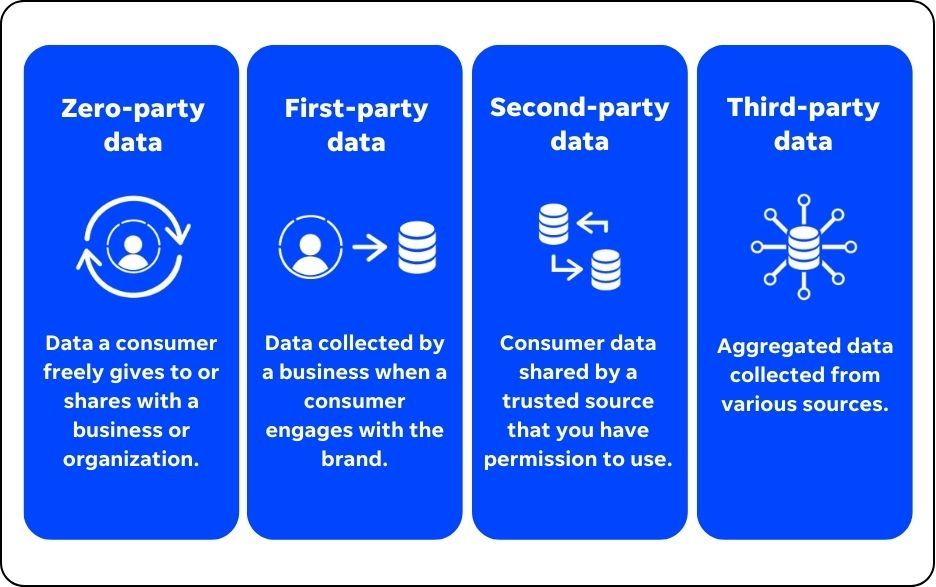
We provided some more tips for responsibly collecting customer data here.
3. Set up reporting
Once you have a way to collect and analyze information about your customers, you need to make sure you have a good reporting structure in place so you can measure success. You’ll want to do this before you start your cross-channel marketing strategy so you know what’s driving results and what needs to be refined.
One of the challenges businesses face with cross-channel marketing is understanding how their marketing is working across channels to get more customers. Reporting that aggregates your cross-channel marketing efforts into one dashboard can simplify this so you can get a clear view of what’s driving website visits, impressions, calls, and more.

4. Segment your audience
Because you’ll want to include some level of personalization in your cross-channel marketing strategy, it’s important to segment your audience. Audience segmentation can give you a relatively easy way to market to a specific group’s overarching attributes while still giving them a personalized experience.
(Unsure who your audience is? Check out these target market examples for inspiration!)
For example, say one of your large audience segments is women ages 25-35 in a specific ZIP code. You can create an email marketing message with imagery that appeals to this group and a local reference they would appreciate. The email isn’t tailored to one person, but each recipient might feel like it’s meant just for them.
To segment your audience, you first need to know and understand your target audience, then you can break that audience into smaller segments.
Some common ways to segment your audience include:
- Demographic: Demographics like age, gender, income, ethnicity, etc.
- Geographic: State lines, city limits, distance from point A to point B, or ZIP code
- Technographic: The way a specific group uses technology
- Psychographic: Psychological characteristics, unconscious or conscious beliefs, motivations, etc.
- Behavioral: Purchasing behavior, benefits sought, buyer journey stage, usage, etc.
5. Identify the right marketing channels for your strategy
Segmenting your audience can simplify this, but the next step is to identify the right channels for your cross-channel marketing strategy. For example, your cross-channel marketing won’t be successful if you’re running campaigns on a channel where few of your customers are spending time or looking for businesses.
Here are some of the top marketing channels to consider:
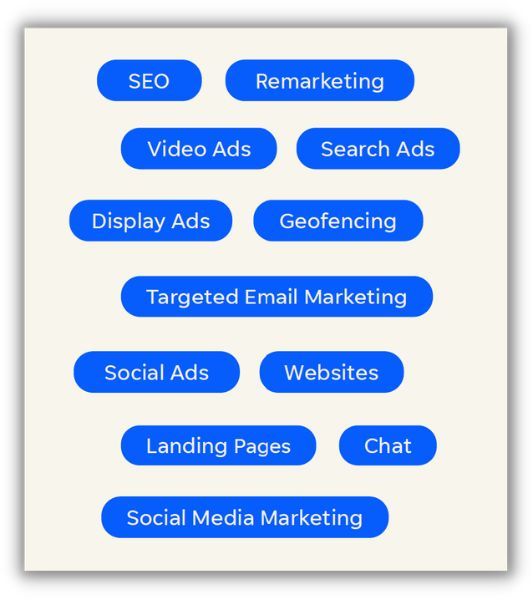
- Website
- SEO
- Search ads
- Social media marketing
- Social media ads
- Display ads and remarketing
- Print ads
- Targeted email marketing
- Geofencing
- Live chat for your website
At the least, we suggest creating a foundational strategy that builds your online presence through SEO, PPC, social media marketing and advertising, and a strong website. From there, you can add other channels that your target audience frequents.
Related: Download our guide to find out the top marketing channels you should consider.
6. Personalize your marketing for each audience segment
Once you’ve identified your audience segments, create specific cross-channel marketing campaigns that target customers within your defined audience segments—and on the marketing channels you outlined. This includes using refined targeting tactics for your advertising campaigns, personalizing your marketing messages when you can, and including further personalization in tactics like email marketing.

Here’s an example of a personalized email marketing message based on an audience segment that purchased this product around a specific time.
The more personalized you can make your marketing, the better cross-channel marketing strategy you will have.
7. Keep your brand and messaging consistent
Obviously, if you’re looking to provide a consistent experience for your customers across channels, you need brand consistency and consistent messaging.
Make sure that all your marketing materials align with your overall brand. This includes any design elements–like your logo, brand colors, and brand fonts—as well as your content elements. You need to keep your messaging aligned with your brand tone, highlight your mission statement, and make sure your marketing accurately portrays your business.
For example, if your brand has a cheeky tone, you can get away with puns or playful phrasing in your ad copy, but if your brand is more buttoned-up and professional, you’ll want your marketing messages to reflect that.
You might also consider running cross-channel marketing campaigns that use the same verbiage so assets look familiar to users across all channels.
8. Analyze your cross-channel marketing
Once you’ve started your cross-channel marketing strategy, it’s important to stay on top of your reporting to see how your efforts are benefitting your business. It may take some time to start seeing results as you must build up your presence and rapport with customers online. After a few months, you can start making tweaks to your strategy and identify your top channels and audience segments that are driving results.
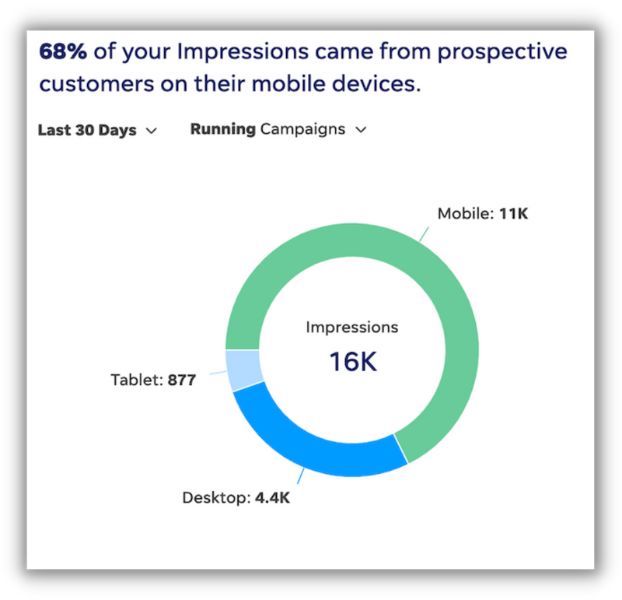
Get started with cross-channel marketing
Cross-channel marketing can yield big benefits for your small business—including increased customer loyalty, higher engagement, and better ROI. By following these simple steps to get started, you can create the best experience for your customers across any marketing channel.
Here’s how to implement a cross-channel marketing strategy:
- Understand your marketing goals and objectives (or create them!)
- Get access to customer data
- Set up reporting
- Segment your audience
- Identify the right marketing channels for your strategy
- Personalize your marketing for each audience segment
- Keep your brand and messaging consistent
- Analyze your cross-channel marketing
Related: Try our free website grader to see how your overall marketing is performing.






